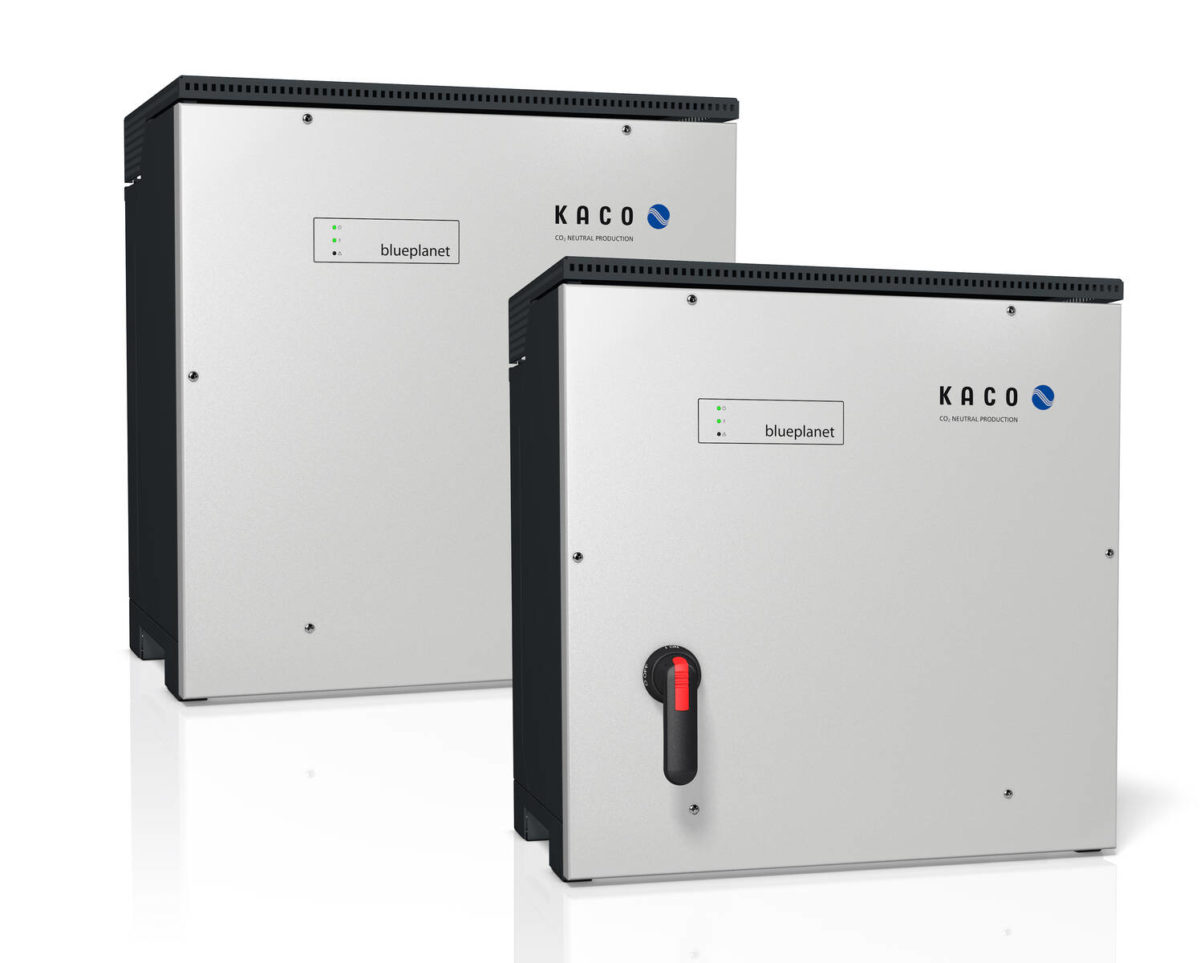German inverter manufacturer Kaco new energy, a subsidiary of German industrial conglomerate Siemens, has unveiled two string inverters for applications in large-scale PV projects.
The two transformerless devices, named blueplanet 155 TL3 and 165 TL3, have a power output of 155 and 165 kW, respectively. Both products rely on silicon carbide power transistors, which the manufacturer claims can provide the inverters with an exceptional power density of two kW per kilogram. The devices are also claimed to offer 15% more power than their predecessor models without silicon carbide transistors.
The 155 TL3 inverter measures 719 x 699 x 460 mm and weighs 78.2 kg. It offers a reported efficiency of 99.1% – for a European rating of 98.9%. The device also features 1500 V (DC) technology, a voltage range maximum power point of 875-1,450 V, and an ambient operating temperature ranging from -25 C to 60 C.
The 165 TL3 device has the same efficiency, size, weight, and operating temperature as the 155 TL3 inverter, but a higher European efficiency of 99.0%.
Both products have one maximum power point tracking (MPPT) input, while their MPPT range is 875-1300 V and 960-1300 V, respectively. Their maximum input current (DC) and maximum short circuit current are 183 A and 300 A, respectively. Both inverters are equipped with IP66 protection, a temperature-controlled fan for cooling, and can be used in projects at altitudes of up to 3,000 meters.
Popular content
“For use in other demanding installation locations, the inverter housing withstands dust, water jets and salt corrosion near the sea,” the manufacturer stated. “While the inverters thus brave adverse conditions on site, commissioning and updates can be carried out remotely via secure Ethernet communication.”
The inverters are optimized for deployment in the cooler and more moderate climate zones, but Kaco said it has also developed a different version for hotter regions.
Silicon carbide-based inverters are known for having higher power density, less need for cooling, and lower overall system costs than traditional inverters. However, defects at the interface between the silicon carbide and the insulating silicon dioxide material may still represent an issue for this kind of device.
This content is protected by copyright and may not be reused. If you want to cooperate with us and would like to reuse some of our content, please contact: editors@pv-magazine.com.



By submitting this form you agree to pv magazine using your data for the purposes of publishing your comment.
Your personal data will only be disclosed or otherwise transmitted to third parties for the purposes of spam filtering or if this is necessary for technical maintenance of the website. Any other transfer to third parties will not take place unless this is justified on the basis of applicable data protection regulations or if pv magazine is legally obliged to do so.
You may revoke this consent at any time with effect for the future, in which case your personal data will be deleted immediately. Otherwise, your data will be deleted if pv magazine has processed your request or the purpose of data storage is fulfilled.
Further information on data privacy can be found in our Data Protection Policy.